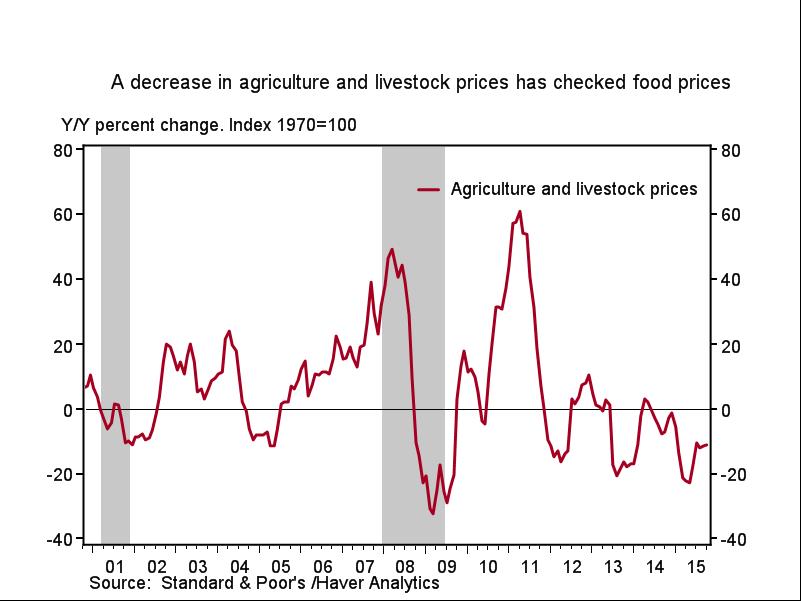The Tale of Two Food Prices
Agricultural commodity prices, the inputs to finished foods, have declined notably over the last year, but consumers are only experiencing the beneficial effects of that at the grocery store – not at restaurants.
That’s one finding of the Everyday Price Index, a monthly report by the American Institute for Economic Research. The EPI starts with the Consumer Price Index, then strips out prices that are contractually fixed, like mortgage payments, to provide a closer look at things people buy more frequently.
One of the major everyday costs people face, besides gasoline, is groceries. Over the last year, food prices at grocery stores have registered a modest 0.7 percent increase, far below the long-term average. Part of the reason for the slow pace of increase is a 10.9 percent decrease in agriculture and livestock prices over the past year.
For instance, cattle prices have decreased 16.7 percent, and hog prices have decreased 29.2 percent, over the last 12 months. Lower cattle and hog prices have contributed to softer meat prices at the grocery store.
However, consumers are seeing a different situation at restaurants.
Restaurant food prices have increased 2.9 percent over the last 12 months. One reason for the increases may be strong demand at restaurants. Consumer spending at restaurants has increased 2.8 percent over the same time period.
AIER’s advice to consumers? Head to the grocery store if you want to reduce your food budget. With weak pricing power and weak demand, competition among grocery stores is likely to remain intense.









